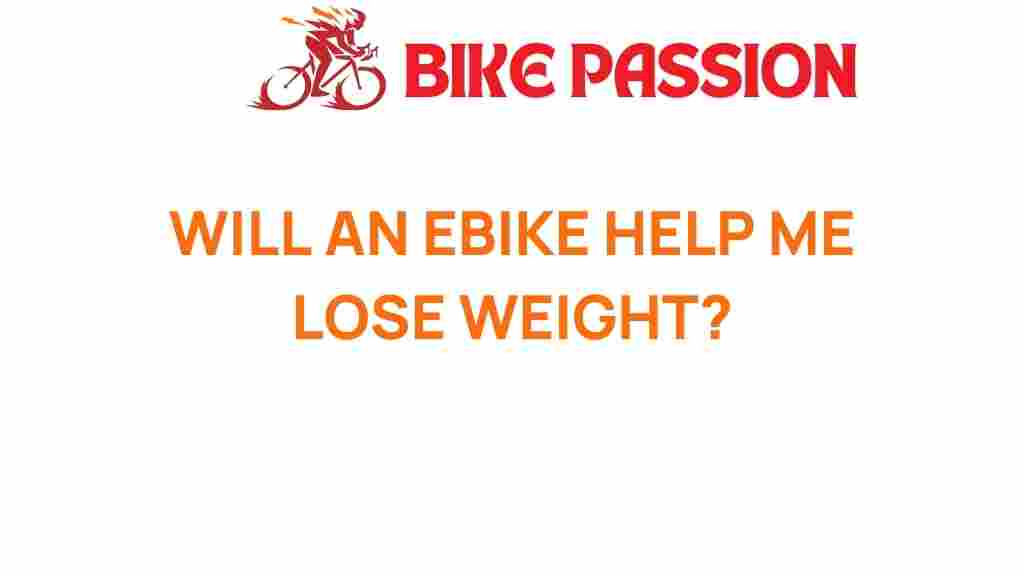Can an Ebike Be Your Secret Weapon for Weight Loss?
Are you looking for an innovative way to lose weight while enjoying the great outdoors? If so, an ebike might just be the perfect solution for you! Electric bicycles, or ebikes, are revolutionizing the way people approach fitness and exercise, making it easier to incorporate cycling into your daily routine. In this article, we’ll explore how an ebike can aid in weight loss, the various health benefits associated with cycling, and tips on how to maximize your outdoor activities for optimal calorie burning.
The Rise of Ebikes in Fitness Culture
Ebikes have gained immense popularity over the last few years. With their ability to assist riders with electric power, they offer a unique blend of traditional cycling and modern technology. This makes them accessible to a broader range of people, including those who may have difficulty riding a conventional bike.
Understanding How Ebikes Aid in Weight Loss
When it comes to weight loss, the principles of calorie consumption versus calorie burn remain essential. Here’s how riding an ebike can help:
- Increased Duration of Exercise: With the assistance of an electric motor, you can ride for longer distances without feeling fatigued. This extended time on the bike means more calories burned.
- Encouragement to Ride More: The ease of pedaling with an ebike often encourages users to choose cycling over driving or public transport, leading to more frequent exercise.
- Customizable Workouts: Ebikes allow riders to adjust the level of assistance they receive, enabling them to tailor their workouts according to their fitness levels.
Health Benefits of Cycling with an Ebike
Aside from weight loss, cycling on an ebike offers numerous health benefits:
- Cardiovascular Health: Regular cycling helps improve heart health by increasing cardiovascular fitness.
- Muscle Strengthening: Cycling works various muscle groups, particularly in the legs and core, contributing to overall muscle strength.
- Mental Health: Outdoor activities like cycling boost mood and reduce stress, thanks to the release of endorphins during exercise.
- Joint Health: Cycling is a low-impact exercise, making it easier on the joints compared to running or other high-impact activities.
How to Start Using an Ebike for Weight Loss
Now that you understand the benefits, here’s a step-by-step guide to help you incorporate an ebike into your weight loss journey:
Step 1: Choose the Right Ebike
Selecting the right ebike is crucial for your fitness journey. Consider these factors:
- Type of Riding: Determine whether you’ll be riding on roads, trails, or a mix of both. This will influence the type of ebike you need.
- Motor Power: Look for an ebike with sufficient motor power to assist you without doing all the work.
- Battery Life: Ensure the battery can last for your intended rides, allowing you to complete longer routes without running out of power.
Step 2: Set Realistic Goals
Setting achievable fitness goals is vital. Start with small milestones, like:
- Riding for 30 minutes three times a week.
- Increasing your distance gradually each week.
- Incorporating hills or varying terrain into your rides for added challenge.
Step 3: Create a Regular Riding Schedule
Consistency is key for weight loss. Try to establish a routine by scheduling your rides during the week. Consider the following:
- Choose specific days and times that work best for you.
- Join a cycling group or find a riding buddy for added motivation.
- Track your rides and progress using fitness apps to stay accountable.
Step 4: Combine Cycling with Other Activities
While cycling is an excellent form of exercise, combining it with other activities can enhance your overall fitness. Consider:
- Strength Training: Incorporate strength workouts to build muscle, which can boost your metabolism.
- Flexibility Exercises: Add yoga or stretching routines to improve flexibility and prevent injuries.
- Nutrition: Adopt a balanced diet to support your weight loss goals.
Step 5: Monitor Your Progress
Keep track of your rides and how you feel after each session. This will help you stay motivated and make necessary adjustments to your routine. Use a fitness tracker or app to log:
- Duration of rides
- Distance covered
- Calories burned
Troubleshooting Common Ebike Issues
As with any fitness equipment, you may encounter some challenges when using your ebike. Here are common issues and their solutions:
Battery Life Problems
If you find that your ebike’s battery is draining too quickly:
- Check if you are using the right assist level for your ride.
- Ensure the battery is fully charged before heading out.
- Consider carrying a spare battery for longer rides.
Comfort Issues
To improve comfort during your rides:
- Adjust your seat height and position for better ergonomics.
- Invest in a good quality bike seat and padded shorts.
- Wear appropriate cycling gear to enhance comfort.
Inconsistent Performance
If your ebike isn’t performing consistently:
- Check for any loose connections in the electrical system.
- Regularly maintain your bike by cleaning and lubricating the chain.
- Consult your ebike’s user manual for troubleshooting tips.
Conclusion: Embrace the Ebike Lifestyle for Weight Loss
Incorporating an ebike into your lifestyle can be a game changer for weight loss and overall fitness. With its numerous health benefits, ease of use, and the ability to make cycling more enjoyable, it’s no wonder that ebikes are becoming increasingly popular among those looking to enhance their outdoor activities.
By following the steps outlined in this article, you can set yourself up for success on your weight loss journey. Remember to be patient, as calorie burning and physical changes take time. Embrace the ebike lifestyle, and you may just find that it becomes your secret weapon for achieving your health and fitness goals.
For more tips on improving your cycling experience, check out this informative guide. And for additional resources on outdoor activities, visit Active.com.
This article is in the category Training and created by BikePassion Team
